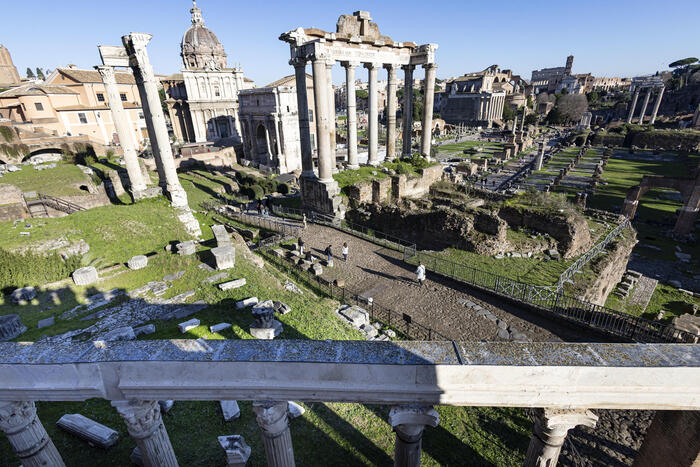The two gentlemen here in front of the Colosseum in Rome are of course actors
Photo: ALBERTO PIZZOLI/ AFP
The scene from »The Life of Brian« is legendary.
In the Monty Python comedy, ranked 28th on the British Film Institute's list of the best British films of all time, the eponymous Brian works as a salesman in a Roman arena.
He offers the members of the »Popular Front of Judea«, who are currently discussing emancipatory issues, an impressive selection of snacks: lark tongues, wren livers, chaffinch brains, stuffed jaguar earlobes and wolf teat chips, for example.
In the end, two bags of otter noses are bought.
And Brian joins the fight against the Roman occupation.
So much for the fiction.
In reality, it is known that the Roman upper class ate exotic birds, dolphins and probably even giraffes, especially at home.
Archaeologists are also concerned with the question of what was eaten in Roman arenas.
From the Colosseum in Rome, the most impressive amphitheater of antiquity, there are now new insights into this question.
They go back to an excavation started in January 2021 in the sewage systems of the building, which is around two thousand years old.
70 meters of sewers were examined, partly with remote-controlled robots.
Bones of bears and big cats
According to the BBC, Alfonsina Russo, head of the Archaeological Park that manages the Colosseum, said remains of figs, cherries, blackberries and nuts were found.
Bones of animals such as bears and big cats have also been found.
The animals would probably have taken part in the fighting in the arena.
With the finds, one learns more about the "experiences and habits of the people" who came into the huge building during the long days of the event, according to Russo.
Admission to the Colosseum was free for the free residents of Rome and the Empire.
In front of about 50,000 people, cruel gladiator fights and animal hunts were presented in the elliptical arena.
Ancient coins were also found during the current excavations, including 50 bronze coins from the late Roman period of the years 250 to 450. Also of note was a silver commemorative coin from around the year 170, which was used to celebrate the tenth anniversary of the reign of Emperor Marcus Aurelius.
The Colosseum was used until about the year 523 and later fell into disrepair.
chs














